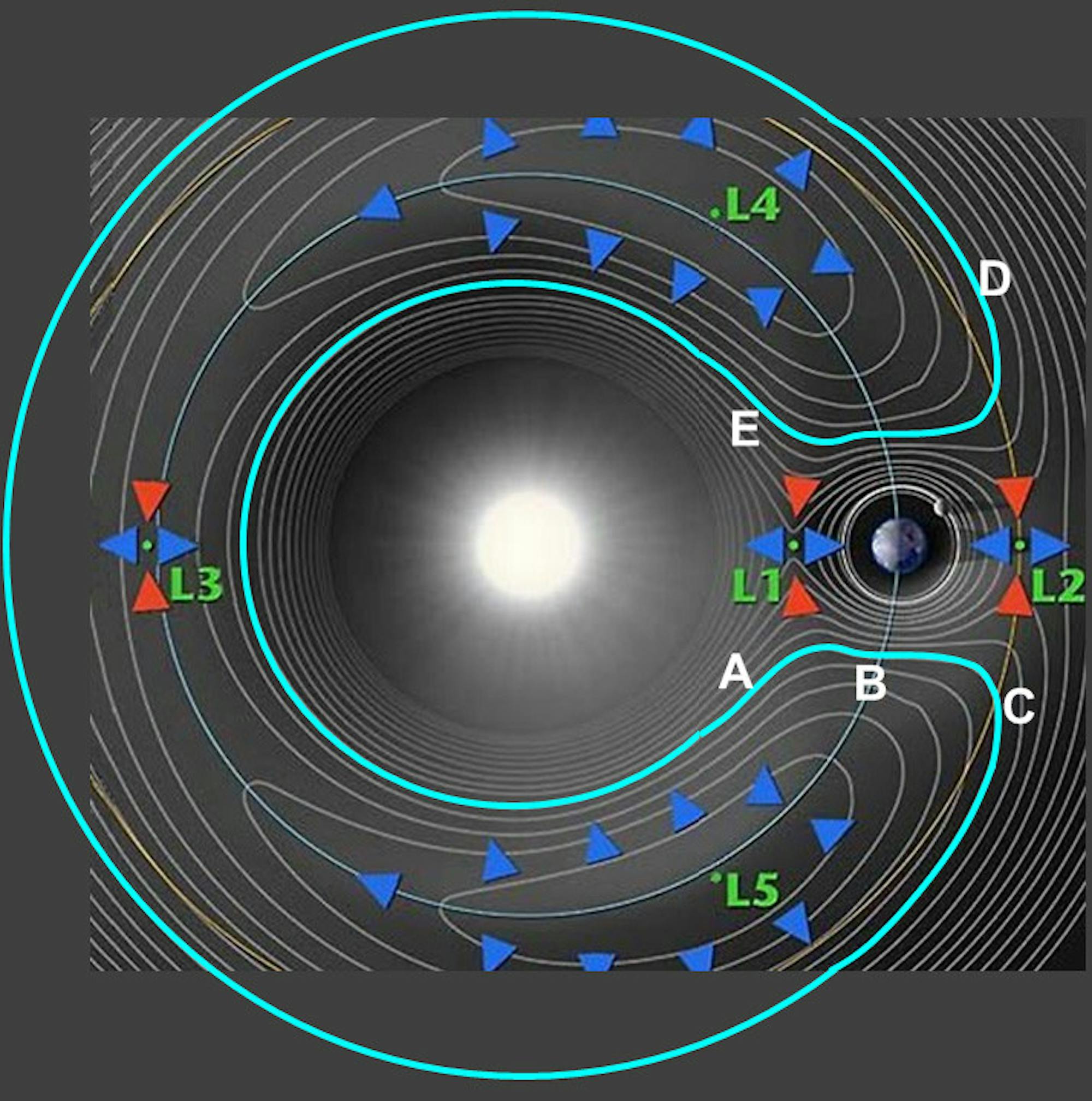Earth gained a mini-moon this Sunday, Sept. 29 by capturing a nearby asteroid with its gravitational field.
Earth pulled asteroid 2024 PT5 into its gravitational field, changing the asteroid’s orbit from heliocentric — around the Sun — to geocentric — around the Earth. 2024 PT5 will remain in Earth’s orbit for about two months, not long enough to complete one full revolution.
A moon is any naturally forming object that orbits a planet, so for about two months, Earth will technically have two moons. However, farther away than the Moon and only about 11 meters in diameter — comparable to a school bus — 2024 PT5 will not be visible with the naked eye or amateur equipment.
“It's not surprising people get interested in this because they suddenly hear of another moon, and you suddenly imagine this is something comparable to the Moon suddenly appearing in the sky,” said Prof. Philip Nicholson, astronomy. “In that sense, it's a bit overblown. This object is much, much smaller than the Moon, and it's only going to be in this kind of orbit for a couple of months.”
According to Nicholson, the Earth and 2024 PT5 are like horses running around a racetrack. One horse — 2024 PT5 — is slightly slower than the other — Earth — but every 30 years or so, they lap one another.
“You can imagine as they come close together the two jockeys reaching out and touching hands or grabbing one another so that they temporarily tie themselves together,” Nicholson said. “Eventually, they're not going to be able to hold on for very long because [the Earth and 2024 PT5] are both in orbit around the Sun, so that's going to dominate.”
When 2024 PT5 approached the Earth this time around, the Earth's gravity slowed it down a bit — just enough to fall further into Earth's orbit. However, 2024 PT5 is at no risk of hitting Earth, according to Nicholson.
2024 PT5 follows a horseshoe orbit, which occurs when an object has an orbit similar to an object of much greater mass — in this case, the Earth — that gravitationally influences it. The horseshoe name refers to the orbit’s shape relative to the Sun and the Earth, with the Earth between the open ends of the horseshoe, and the Sun in the very center. The bubble-letter-C-shaped-orbit illustrates how the Earth’s gravity makes the asteroid “turn around” relative to the Earth. In this case, 2024 PT5 will move from a heliocentric orbit further from the Sun than the Earth, to a brief orbit around the Earth and finally to a heliocentric orbit closer to the Sun than the Earth, according to Nicholson.

A horseshoe orbit, in teal, drawn relative to the Earth and Sun. Image courtesy of WikiMedia Commons.
Although the above image makes it seem like a horseshoe-orbiting object does not completely circle the Sun, this is not the case. The horseshoe shape appears only when tracing the orbit relative to the Earth. From the perspective of the Sun — how we usually imagine orbits — the horseshoe-orbiting-object completes a full loop around the Sun, like a horse running around a racetrack. In the case of our temporary mini-moon, 2024 PT5 is like a horse starting on an outside lane of the racetrack, moving slower than the Earth. When the Earth and 2024 PT5 caught up to each other, Earth's jockey reached out, tugging 2024 PT5 around it temporarily. Eventually, Earth will release 2024 PT5 into an inside lane of the racetrack, now moving faster than the Earth but continuing to circle the Sun. When the Earth and 2024 PT5 meet close enough again for Earth’s gravity to influence the asteroid, it will move from an inner track to an outer track.
2024 PT5 is not the first “mini-moon” to fly by Earth, though it is one of just a handful to be detected. According to Nicholson, plenty of objects periodically approach the Earth. However, horseshoe orbits like that of 2024 PT5 are unique because their orbits are always near the Earth’s. Consequently, they often have fairly close encounters with Earth, potentially every few decades.
“Dynamically, [2024 PT5] is definitely an interesting object,” Nicholson said. “It's not a risk posed to us, and it is part of the natural scheme of things, but it does tend to demonstrate that orbits come in lots of weird varieties.”











